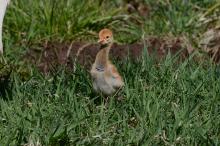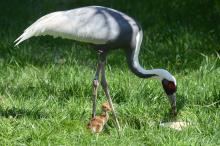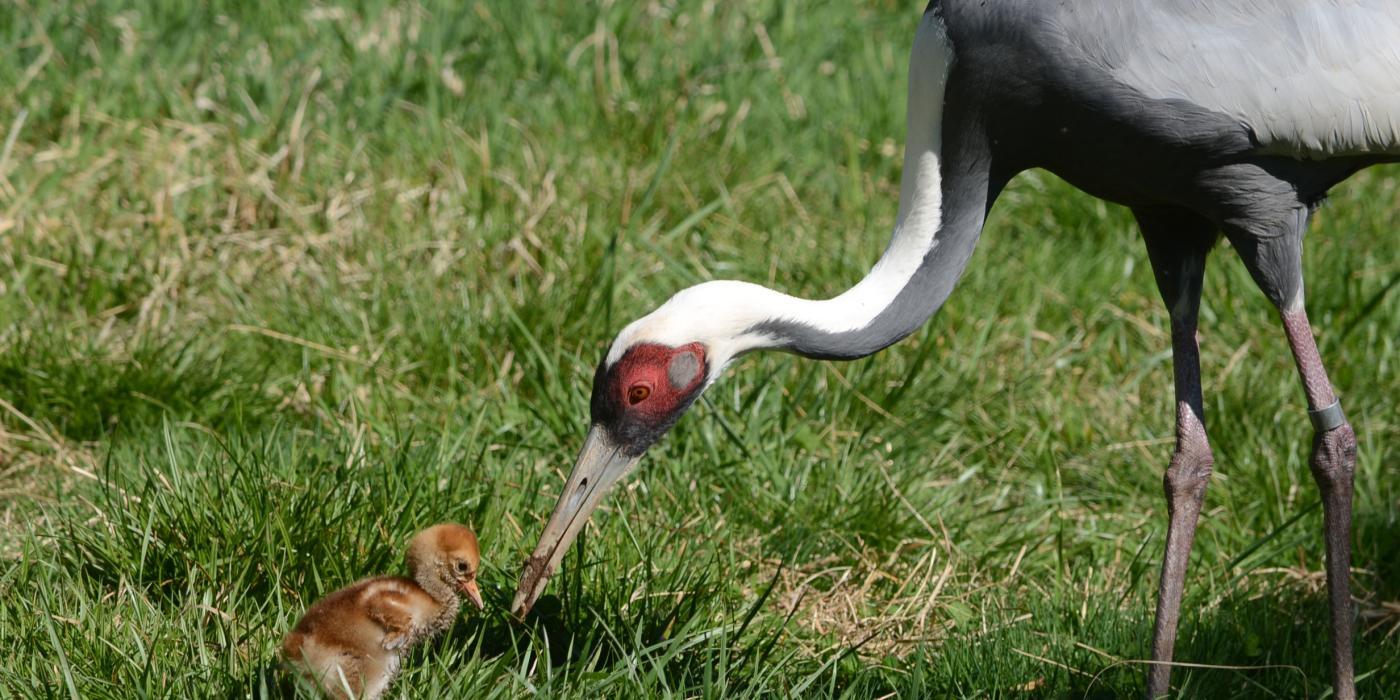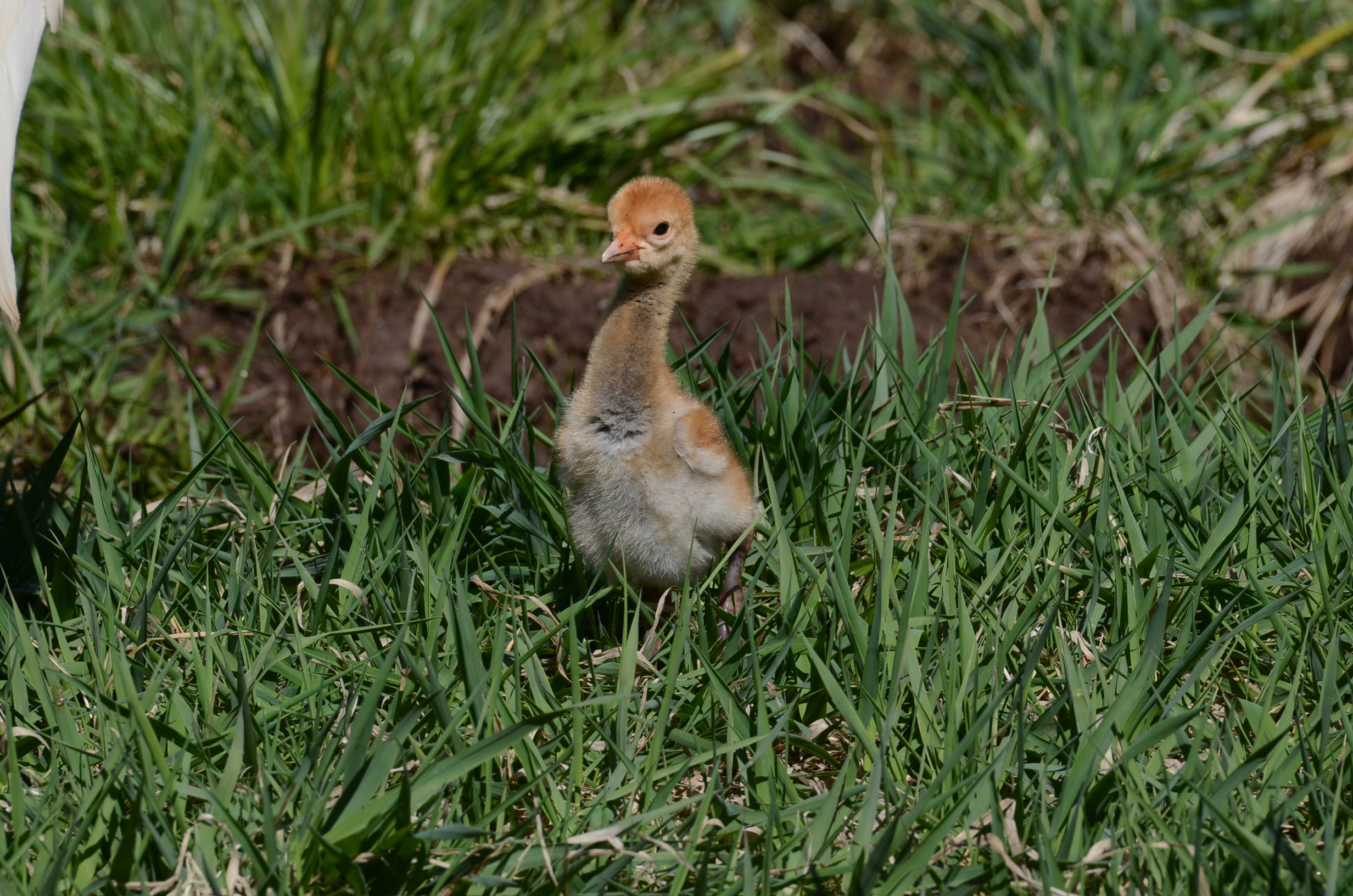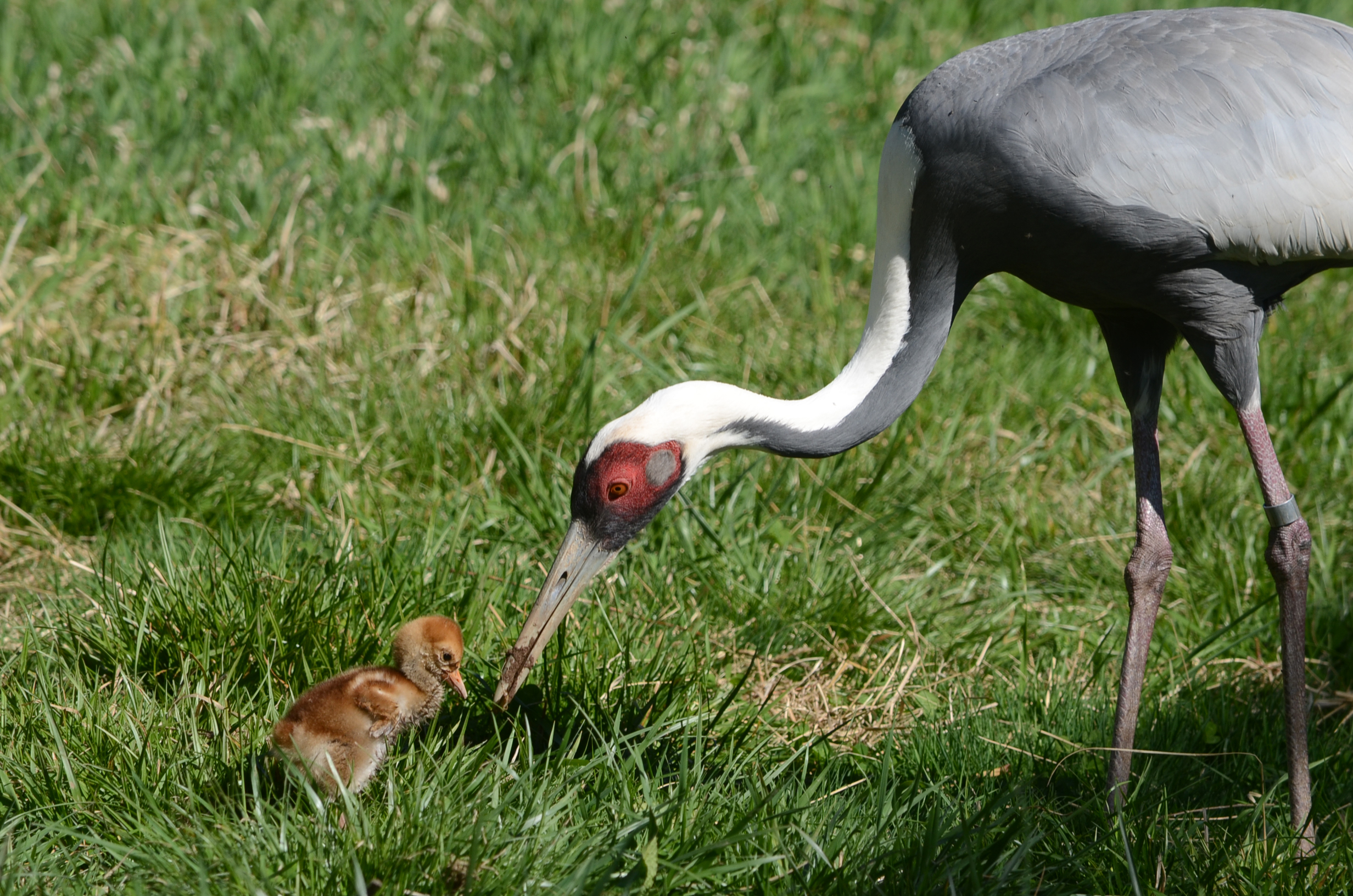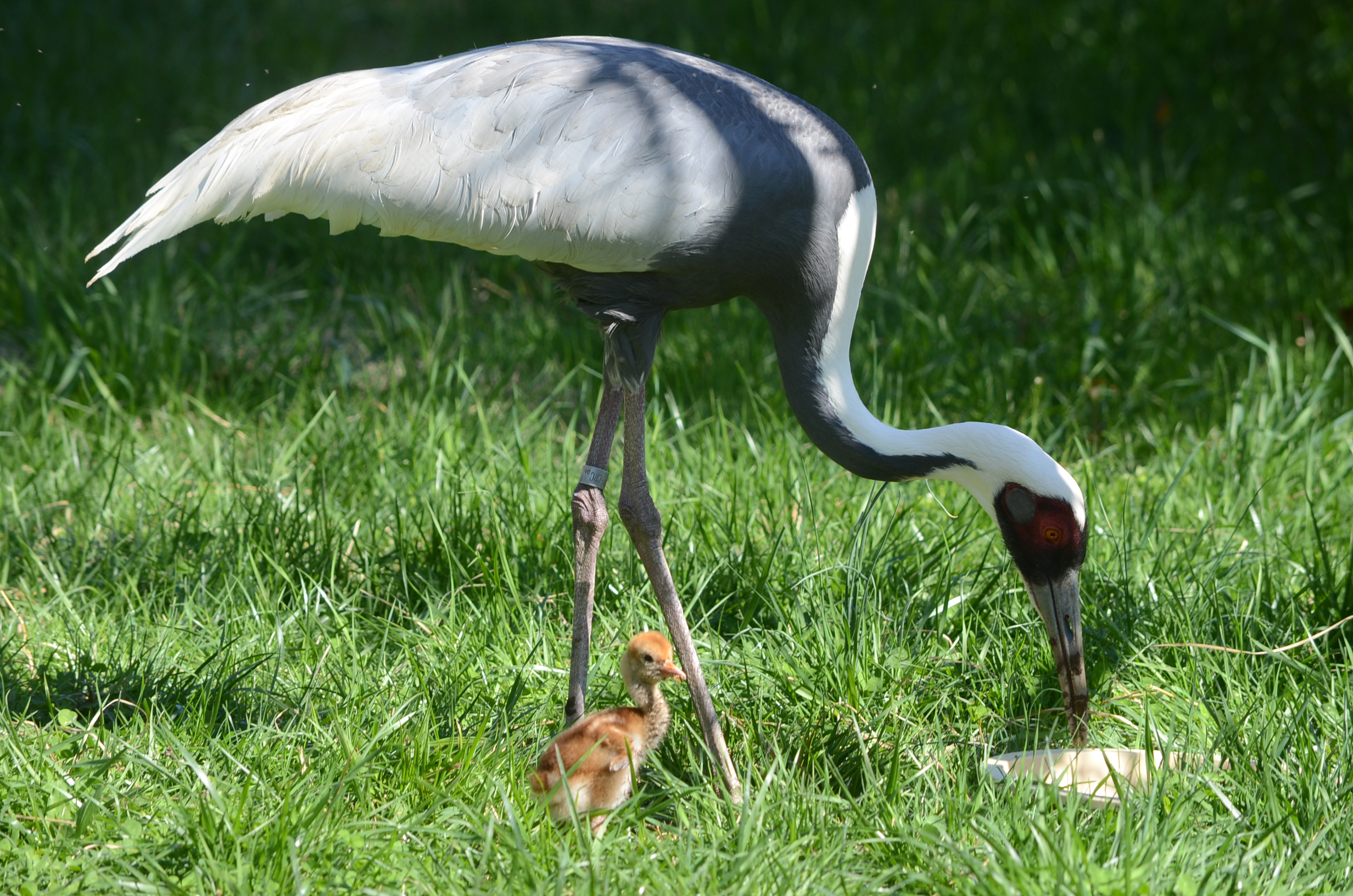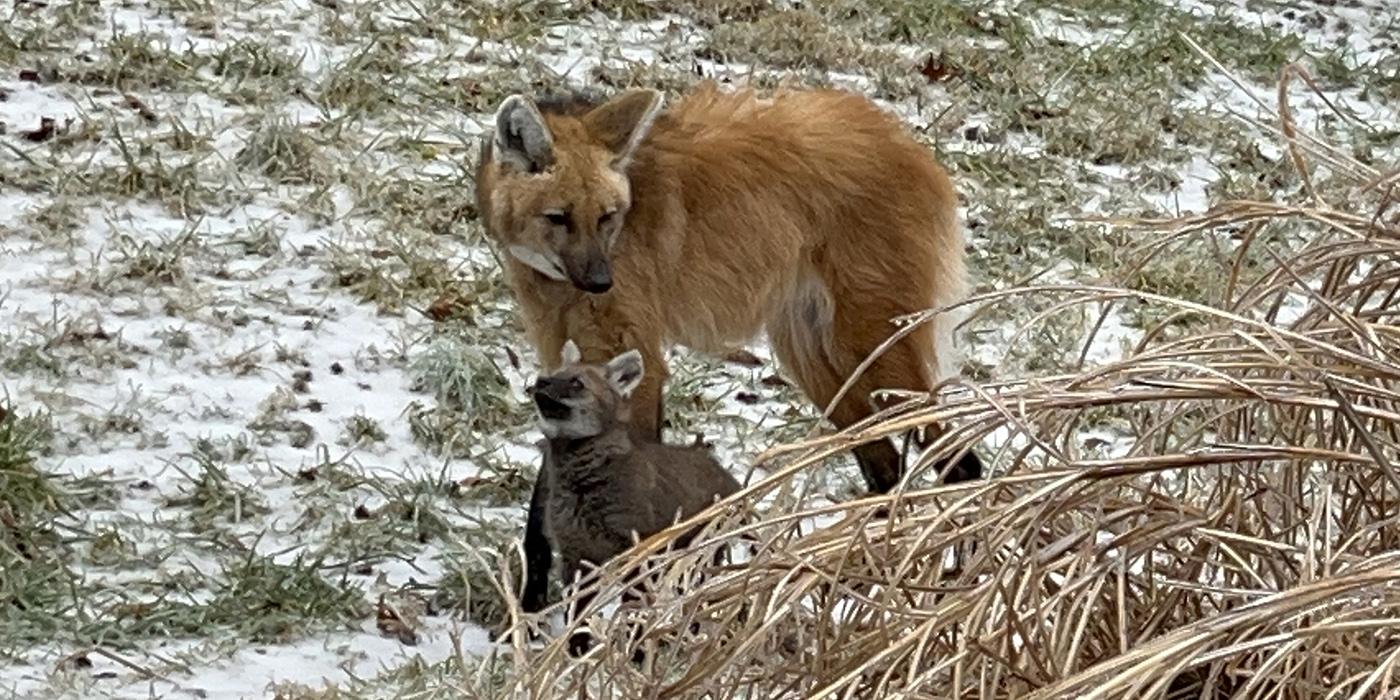White-Naped Crane Hatches at the Smithsonian Conservation Biology Institute
Bird keepers at the Smithsonian Conservation Biology Institute (SCBI) in Front Royal, Virginia, are celebrating the arrival of a female white-naped crane chick that hatched April 2. She is the fourth chick for parents Brenda and Eddie and is the 46th to hatch at SCBI. Animal care staff at SCBI have had great success producing chicks from cranes that have behavioral or physical impediments that prevent them from breeding. The chick’s parents are one of the only white-naped crane pairs living at the research facility capable of breeding naturally. Prior to hatching, scientists confirmed the chick’s sex using DNA samples taken from inside of the egg. Keepers are closely monitoring the chick’s development while leaving the experienced parents to bond with their chick without interference. They report Brenda and Eddie are providing excellent care to their chick. There are an estimated 5,000 white-naped cranes living in the wild, and the species is listed as vulnerable by the International Union for Conservation of Nature (IUCN).
As a public health precaution due to COVID-19, the Smithsonian’s National Zoo and Conservation Biology Institute is temporarily closed to the public. Animal keepers and veterinary staff remain working on site at the Zoo and SCBI to provide the usual highest quality care for the animals. The Zoo’s legacy of conservation work extends beyond the public Zoo in Washington, D.C., to SCBI headquarters in Front Royal, Virginia. Scientists at this 3,200-acre campus study and breed more than 20 species. The sprawling environment allows for unique studies that contribute to the survival of threatened, difficult-to-breed species with distinct needs, especially those requiring large areas, natural group sizes and minimal public disturbance. SCBI scientists tackle some of today’s most complex conservation challenges by applying and sharing what they learn about animal behavior and reproduction, ecology, genetics, migration and conservation sustainability.
Related Species:
Image Gallery
